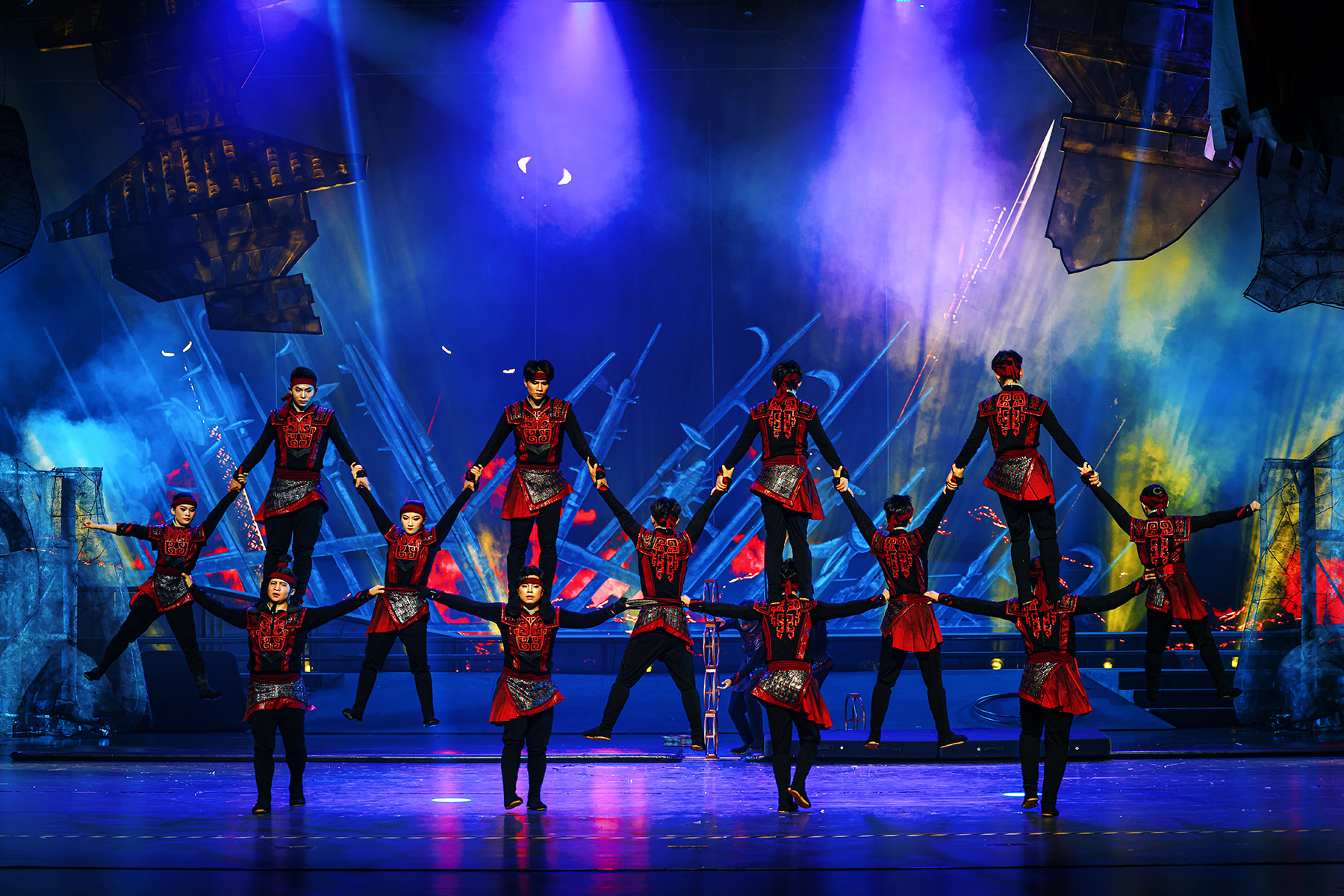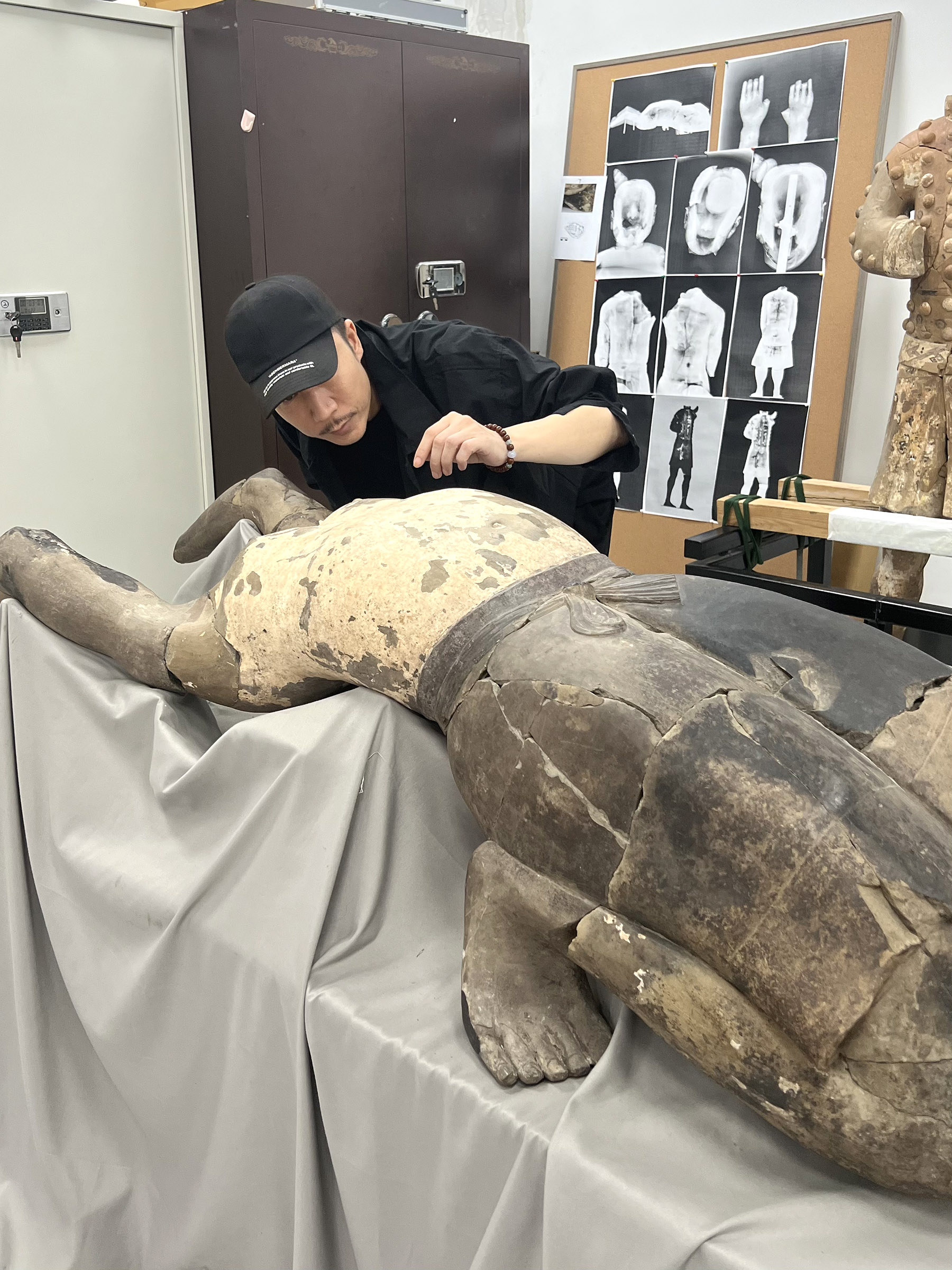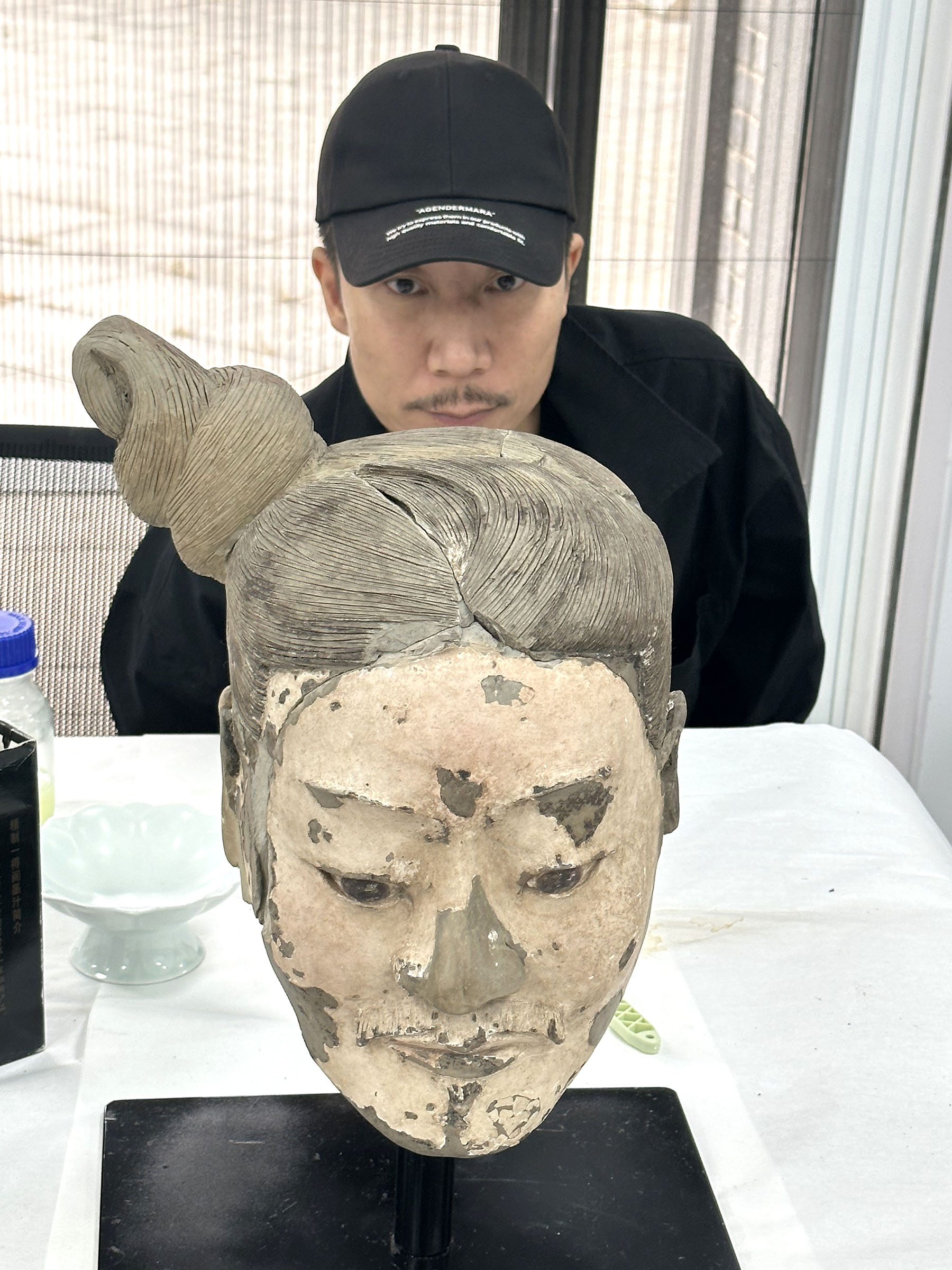Touching a two-millennia-old fingerprint on a supine figurine inspires director to create an acrobatic production symbolizing how the past connects the present, Chen Nan reports.

Last year, when director Fu Zhitao first stepped into Emperor Qinshihuang's Mausoleum Site Museum in Xi'an, Shaanxi province, he was prepared to see history. He didn't expect to touch and feel it.
In the museum's conservation and restoration center, specialist Ma Yu guided Fu to a statue in a lying position, known as the "supine figurine", and pointed to a faint fingerprint that was pressed into its abdomen more than two millennia ago.
"At that moment, I felt shivers," Fu recalls. "It wasn't just terracotta anymore — it was a life. That fingerprint carried the breath of its maker across thousands of years, straight to me."
READ MORE: Accessible documentary explores China before China
It was this fleeting yet powerful trace of humanity that became the inspiration for Fu's newest large-scale acrobatic drama, One Finger Across the Millennium, which premiered in Xi'an on Sept 4. The production brings together performers from the Shaanxi Acrobatic Arts Troupe and was commissioned by Emperor Qinshihuang's Mausoleum Site Museum.
Fu explains that the fingerprint became both a symbol and a method when he envisioned the stage production. "History often reaches us in fragments," he says. "But fragments are alive. They invite us to rebuild, to imagine, to connect. Acrobatics is exactly that — a physical way to reconstruct memory."

The plot follows three young men who were childhood friends, and whose paths diverged against the backdrop of the Qin Dynasty (221-206 BC). The story unfolds with a scene of a bustling market, where the young men discover and realize their dreams. One becomes a soldier, another becomes a craftsman, and the last one becomes a baixi (variety acrobatics) performer. Their fates, marked by glory, sacrifice and artistry, reflect the resilience of ordinary people.
"Each represents a choice, a dream, a human destiny," Fu notes. "The fingerprint reminded me that countless hands write the history of workers, soldiers and artisans."
Fu also mentions, according to specialists at the museum, including Ma, he learned that the "supine figurine" in the Acrobats Pit, or Pit 9901 at the museum, was first unveiled during a ceremony for China's Cultural and Natural Heritage Day in 2022. Different from terracotta soldiers and civil officials in other burial pits, the figurines in Pit 9901 depict the acrobats who performed in the imperial palace. Discovered in 1974, the Terracotta Warriors army was built by Emperor Qinshihuang of the Qin Dynasty, who unified China for the first time.
"In addition to some war scenes, we also presented a chapter in the production to showcase a variety of acrobatics, which take the audience back to old China," says Fu, adding that when Ma and other specialists researched the "supine figurine", they invited professional acrobats to imitate the figurine's movements, hoping to discover clues about how it was created.

Fu has been involved in grand galas, such as China Central Television's Spring Festival Gala in 2019 and 2020 and the Silk Road International Arts Festival in 2014.
If Fu's direction gives One Finger Across the Millennium its heartbeat, the music score provides its breath. Composer Qian Qi, a professor at the Central Conservatory of Music, tailored the music to "serve the production, take audiences back to the Qin Dynasty, and empower acrobatics".
"The show moves constantly between restoration, time-travel, and cultural transmission," Qian says. "I wanted the music to be the thread that ties those worlds together."
Anchoring his score in a "dual core" — the activation of artifacts and the dialogue between past and present — Qian combined the deep timbres of ancient instruments like the bianzhong (bronze bells) and the xun (Chinese vessel flute) with the power of a modern symphony orchestra.
"When we evoke the grandeur of the Qin army, you hear the solemn bronze bells reinforced by brass," he says. "When we show the labor of craftsmen, the plaintive tones of the xun merge with plucked strings to convey warmth and devotion."


Qian also infused modern techniques, using layered electronic textures to conjure the sense of "a fingerprint crossing millennia".Rhythmic precision supports the acrobatics: Rapid drumming mirrors juggling sequences, while soaring melodies rise as performers scale poles and balance on them at seemingly impossible heights.
"Music does not just decorate the technique," Qian says. "It breathes with it. The audience should feel that every leap and spin is carried by sound."
Technology amplifies this dialogue between past and present. Projections and lighting transform scattered fragments into living warriors, according to Fu, who invited veteran stage designer Liang Xiqing to join the production.
"That fingerprint moved me because it was proof of humanity, and it worked for Liang the same way," Fu says. "Through this show, I hope audiences feel that touch — the warmth of the past reaching into today. It reminds us that civilizations are not built by emperors alone, but by countless hands, each leaving a mark."


A key moment in the show occurs when light filters through a window in the restoration lab, falling on the fingerprint embedded in the reclining figurine's abdomen. This scene, designed to elicit the feeling of time collapsing, offers poignant visual representation of how the past continues to resonate.
"The entire production is about putting together fragments — like restoring a broken artifact. Each scene shows pieces of history coming together, creating a larger narrative," Fu says.
ALSO READ: Walking the cultural tightrope
"The set design, with scattered fragments and shifting projections, reflects the process of piecing together the past," says the director. "At its core, the show is a tribute to the resilience of the human spirit.
"This production isn't just about warriors and emperors. It's about the people: the laborers, the craftsmen and the dreamers who, through their perseverance, built the foundation of the country's history."
Contact the writer at chennan@chinadaily.com.cn


